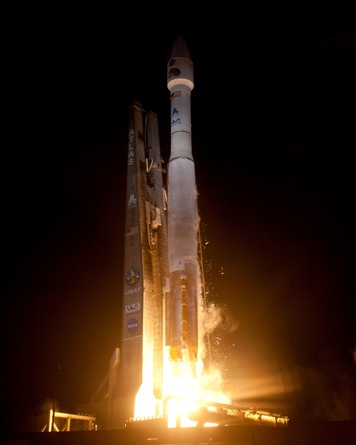A United Launch Alliance (ULA) Atlas V expendable launch vehicle has successfully carried two scientific satellites for NASA into orbit from the Kennedy Space Center in Florida.
The launch was delayed a week over a faulty tracking beacon aboard the spacecraft, extra engine checks, and weather disturbances caused by tropical storm Isaac.
The Atlas V was launched in 401 configuration, with a 4m fairing and without solid rocket boosters. It is the 32nd Atlas V launch, and the 14th in the 401 configuration.
The satellites, called Radiation Belt Storm Probes, will study the layers of charged particles that surround the Earth, collectively called the Van Allen radiation belt. The satellites will fly highly elliptical orbits.
"We have never before sent such comprehensive and high-quality instruments to study high radiation regions of space," says Barry Mauk, project scientist at Johns Hopkins. "RBSP was crafted to help us learn more about, and ultimately predict, the response of the radiation belts to solar inputs."
 |
|---|
©ULA |
Source: Flight International


























